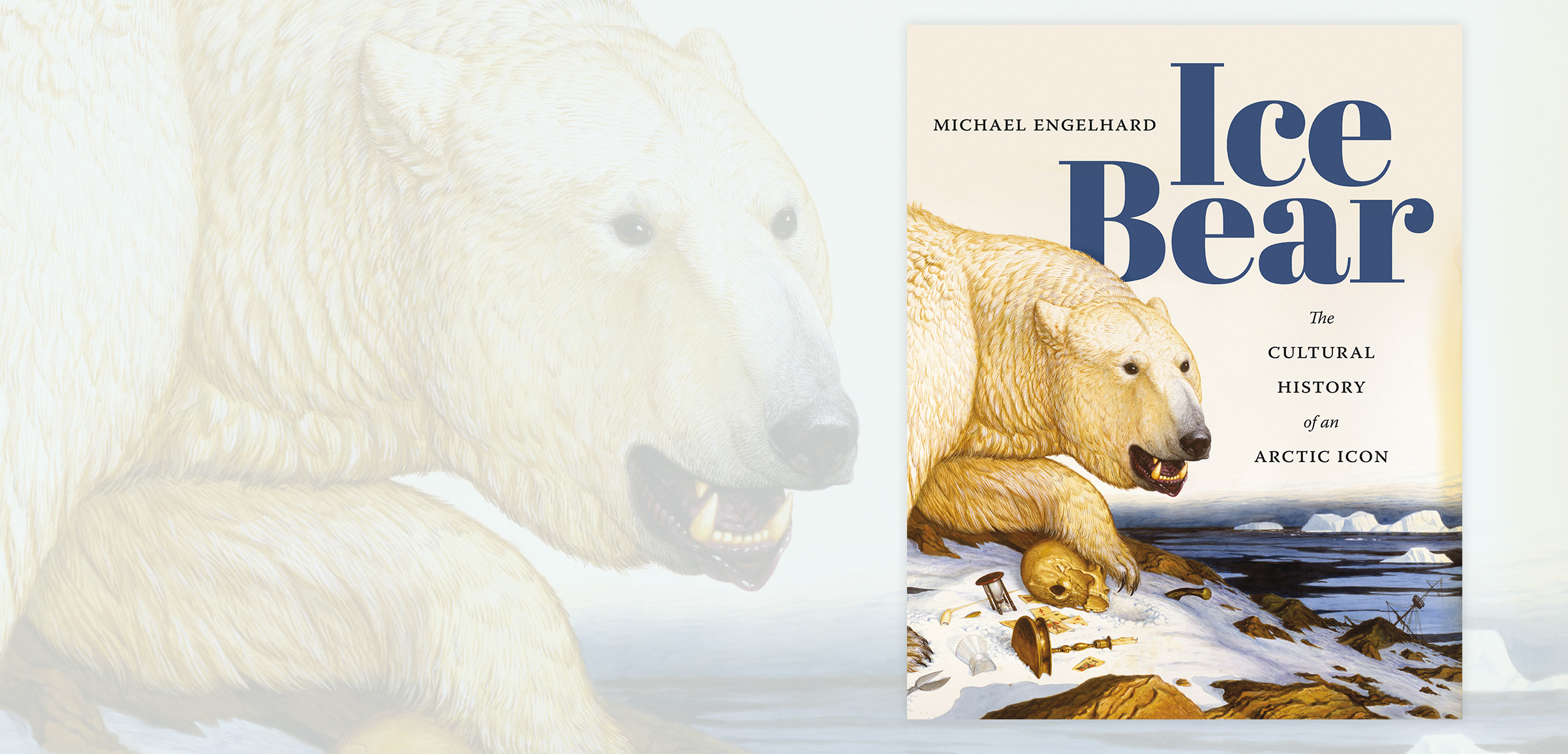Book Review: Ice Bear
A richly illustrated book explores the cultural history of the Arctic’s iconic symbol: the polar bear.
Article body copy
One night in 1891, a Bavarian servant named Karoline Wolf undressed, neatly folded her clothes, and climbed down a rope into the bear pit at the Frankfurt Zoo. The apparently unstable woman wanted to be eaten alive by a polar bear, and she succeeded. Thus begins—and ends—one of countless intriguing anecdotes in Michael Engelhard’s book Ice Bear: the Cultural History of an Arctic Icon, which seeks to make sense of humanity’s fascination with polar bears. Engelhard traces that attraction from his respectful retelling of the stories of Arctic and subarctic indigenous peoples through to modern art shows and environmental protests.
Polar bears have always captured the human imagination, with every encounter seemingly worth its own new story. With the volume of tales to be told, at times Ice Bear can feel like a jumble of tangentially connected stories under loose groupings, such as the “Transformative Bear” and “Helper and Protector,” but in the telling of far-fetched legends alongside historical facts and scientific knowledge, Engelhard paints a holistic picture of the species and its societal and environmental context. His generous use of images from history and pop culture—be they circus rings populated by over a dozen white bears, or illustrated pinup girls luxuriating on a polar bear rug—adds color to that context, and sheds light on rare images of the North.
The book can also be taken as a history of humans’ understanding of and relationship to the Arctic writ large, with polar bears acting as the surrogates for its wildlife and wilderness. When the Arctic was a foreign and hostile land barely known to the rest of the world’s inhabitants, polar bears were rare and mythical beasts. When the Arctic became a proving ground for young military officers and sailors, polar bears were valuable trophies. And today, as the future of the robust Arctic environment fades with the melting ice, polar bears are the face of that change, attracting tourists to see them before they’re relegated to zoos.
The young woman at the Frankfurt Zoo may have been an extreme case, perhaps driven more by insanity than fascination, but she wasn’t alone in her desire to get closer to the bears. Today, polar bears have become corporate mascots, symbols of a changing climate, and sought-after trophies both dead and, as the subjects of photos, alive. But in Ice Bear, Engelhard tries to throw off the sentimentality that marks most modern writing about polar bears in order to focus on their real significance in human culture. It’s a book that has as much to say about humans as it does about its subject, and it explores that niche well in an entertaining style.
Ice Bear: the Cultural History of an Arctic Icon
By Michael Engelhard
304 pp. University of Washington Press

